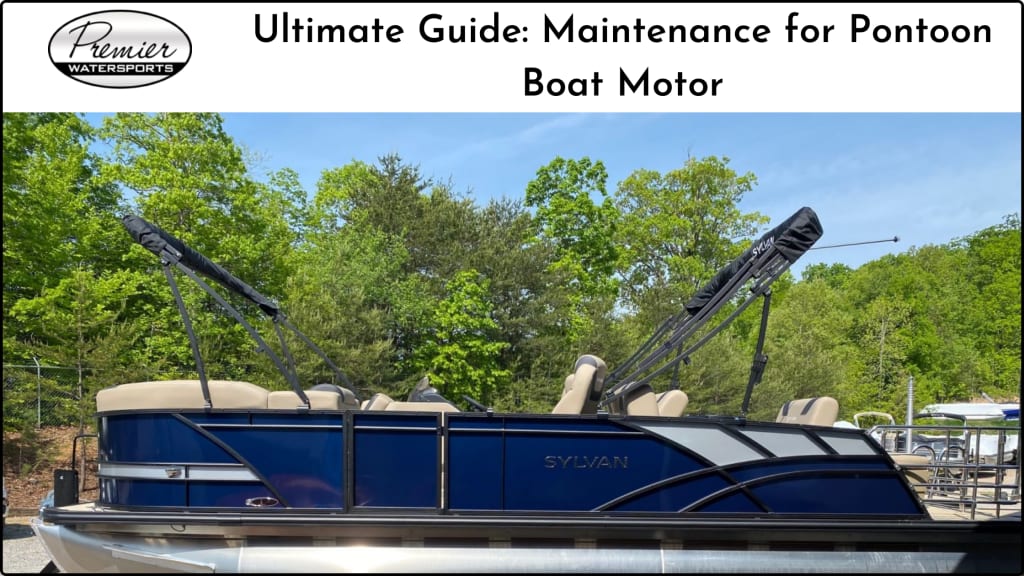Ultimate Guide: Maintenance for Pontoon Boat Motor
Proper maintenance is essential for keeping your pontoon boat in good working condition. With this guide, you can ensure that your boat is ready to hit the water.

You have finally decided to buy a pontoon boat, and now you are the proud owner of one. However, if you're new to boating, you may not realize that caring for an outboard motor is easier and less complicated than a stern-engine boat. The floating pontoon boat is popular because it's the ideal family boat and because upkeep and maintenance are a breeze.
Knowing how to maintain and repair your pontoon boat engine yourself will benefit you in the long term. It might tell you when to bring it in for a service, and it can help you check problems that are preventing you from sailing.
Your pontoon boat's engine is what gives it the power to move. Here is a guide on how to take care of the engine and keep it running smoothly for years to come.
Tips for Maintaining Your Pontoon Boat Engine
Break-In the Motor
If you're buying a brand new pontoon boat, you should know the engine's break-in period. Make sure you talk this through with your dealer before getting on board for the first time, so ask them before you go.
The break-in period should begin as soon as the boat is delivered. This is the engine's operation at specific RPM ranges for set periods to create tolerances for moving components within the engine.
It's critical to follow the manufacturer's recommendations for break-ins stated in the owner's handbook. Also, each brand has its way of doing things, so you'll want to make sure you're familiar with the process.
A lack of attention to the break-in procedures might result in poor performance throughout the engine's life and engine damage.
Regular Maintenance
You may have a contract with your boat dealer that ensures they will do all maintenance on the engine for you. But it is still a perfect idea to familiarize yourself with the process and be able to do some of it yourself.
Most new engines require maintenance after hours to eliminate any shakedown from the initial break-in period. For example, Yamaha outboards require an oil change after the first 100 hours.
For a good cause, a 100-hour service is quite comprehensive. To begin, an oil change generally begins the process. Then, there's a long list of additional services, such as battery inspection and propeller shaft lubrication.
The most popular engine designs are all identical, although they may differ depending on the manufacturer, so always check your owner's manual.
Maintaining a regular schedule is critical once you've broken in the engine and had your first round of maintenance. Typically, this means an oil change and filter replacement every 100 hours.
You should also regularly check the engine's fluids, such as the coolant and gear lube. Gear lube is generally changed simultaneously with the oil, but the coolant may need to be changed more frequently, depending on how often you use the boat.
Once you reach 300 hours on your engine, you'll probably want to have more things looked at than what's covered on your 100-hour checklist. The components of your engine that are prone to failure include; a water pump impeller, spark plugs, alternator drive belt, and others.
So, at this point, you'll want to do a general checkup on the engine. If something isn't working right, don't wait to have it fixed.
Healthy Battery, Healthy Boat
The boat's battery significantly influences ensuring that everything operates well. If the battery is losing charge or not being replaced as it should be, then the boat's engine will have to work harder.
You need to care for your battery and keep an eye on its charge. Inspect the terminals and clean them if necessary.
Remember to switch off the battery when it's not in use, and when storing it for an extended period, disconnect them fully. Before placing them in storage, make sure they have a full charge. Batteries that are not kept properly discharged will have a harder time surviving the winter and may be difficult to recharge fully in the spring.
The lifespan of a battery is determined by how it is used and maintained. If well-maintained, batteries typically endure for 3-5 years.
One of the first indications that your battery is in good working order is when you have enough voltage while the boat is turned on. A fully charged marine battery has a static voltage of about 12.5 volts. Therefore, you should expect to see 13-14.5 volts on your gauges when the engine is turned on.
If both batteries are severely drained, you may note a decrease in voltage output. Raising the engine RPMs will help charge the batteries faster by engaging the alternator at a higher rate.
Do not turn the battery switch to the "Combine Batteries" option unless it's an emergency. If you leave it on all day to mix and run the radio on both batteries, you may wind up with two dead batteries and no backup at the end of the day. The battery switch position is crucial for engine operation and should only be used when necessary.
Your dealer or a qualified marine technician can help you determine if your battery is in good working condition and how often it should be replaced.
Read here to know if you can use a Pontoon boat in the ocean.
Keep Things Running Smooth
If you don't already have a service manual for your boat, get one. This will give you the information you need to keep things running smoothly.
You should also develop a relationship with a qualified marine technician who can help you with regular maintenance and repairs.
The right place to start is taking your boat in for an annual checkup. This should include an oil change and filter replacement and a thorough inspection of the engine, hull, and electrical system.
The technician will also be able to identify any areas that may need attention and make recommendations for repairs or replacements.
The technician will also winterize the boat during the annual checkup if necessary. This is a process of adding fluids and changing the oil to protect the engine from freezing during the winter months.
It's also good to have the boat's bottom cleaned and waxed regularly. This will help protect the hull from saltwater corrosion and make it easier to clean in the spring.
If you live where snow and ice are common, you may need additional steps to prepare your boat for cold storage. This includes removing all electronics, draining the water system, and covering the boat to protect it from the elements.
Conclusion
Your pontoon boat will last for many years with proper care and maintenance. Follow the manufacturer's recommendations for servicing the engine and other systems. Regular checkups with a qualified marine technician will help keep your boat in top condition and identify potential problems.
Happy boating!
About the Creator
Premier Watersports
Premier Watersports is Tennessee’s dealer for Supra Wakeboard Boats, Moomba Boats, Yamaha Sport Boats, Starcraft Boats and Sylvan Pontoons, with locations in Knoxville and Nashville.






Comments
There are no comments for this story
Be the first to respond and start the conversation.